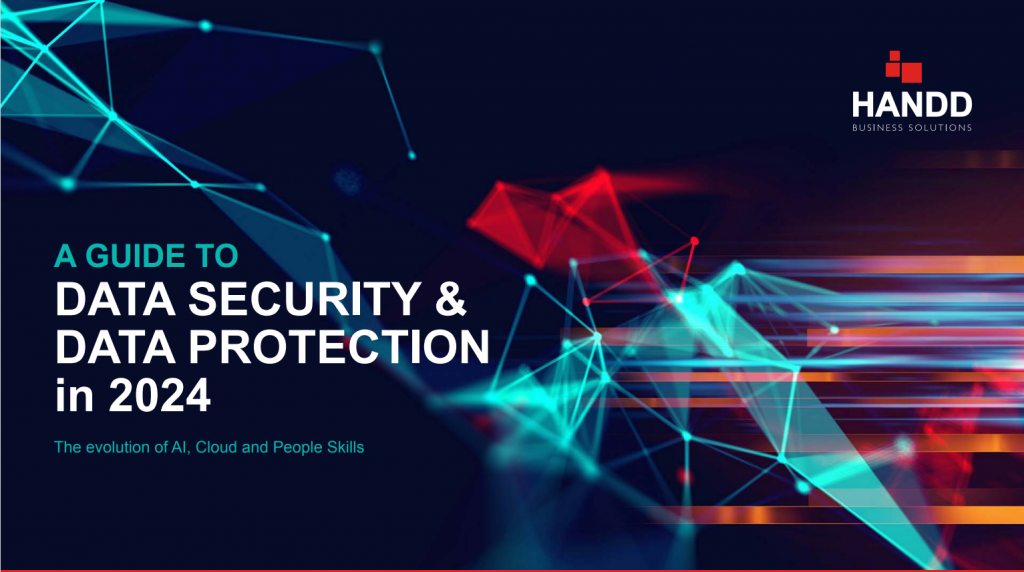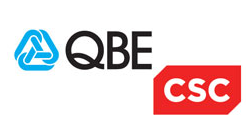How Digital Transformation is Reshaping Data Security
Posted by HANDD on 11th November 2024
As a company becomes more digital – so does the need to implement more security around its data. Implementing advanced cyber security solutions and data management systems and ensuring compliance with data protection regulations may be the only way to effectively safeguard against emerging threats to data and the new vulnerabilities created by our increasingly interconnected, digital world.
WHAT IS DIGITAL TRANSFORMATION?
Digital transformation refers to the integration of digital technology into all areas of a business, fundamentally changing how the company operates and delivers value to its customers. It’s not just about adopting new technologies but also about changing the way an enterprise thinks and operates. As most now operate with an established digital footprint, this term no longer solely describes the digitisation of analogue and manual processes. Instead, it extends to advancing technology adoption including items discussed previously like Large Language Models (LLMs), Big Data and cloud computing.
Businesses are constantly working to adopt new technologies to improve their performance, improve the experience given to their customers and deliver operational efficiency gains. As technology expands, so does the data footprint and with it the risk profile and fight to keep sensitive information safe.
WHY IS DIGITAL TRANSFORMATION A THREAT TO DATA?
Implementing new technologies and replacing understood, trusted older ones comes with a range of data-related threats and risks that must be carefully managed to ensure the security and integrity of sensitive information.
Here are some key threats and risks:
- Cyber Security Threats
As organisations increase their digital presence, they also expand their attack surface. Cyber threats such as misconfiguration of platforms, new types of malware, ransomware and human error could expose an organisation’s infrastructure and the data residing within it. - Data Breaches
With more data being digitised and stored in different platforms or across multiple locations, the risk of data breaches escalates. These breaches can lead to significant financial losses, reputational damage, and legal consequences, especially if sensitive or regulated data is exposed. - Compliance Risks
Digital transformation often involves navigating complex regulatory environments. Failure to comply with data protection regulations like GDPR, HIPAA, or others can result in hefty fines and other penalties. - Insider Threats
Not all threats are external. Insider threats, whether due to malicious intent or negligence, can lead to significant data exposure. Employees who are not properly trained in data security practices can inadvertently become a risk factor. - Integration Issues
Integrating new technologies with existing systems can create vulnerabilities, especially if these systems are outdated or if the integration is not securely managed. This may leave openings for attackers to exploit. - Lack of Visibility and Control
As data moves across various platforms and devices maintaining visibility and control becomes challenging. This can lead to gaps in security where unauthorised access might go undetected. - Data Loss
Beyond theft or exposure, data can also be lost due to technical failures or poor data management during the transformation process. This loss can disrupt business operations and require costly recovery efforts.
Addressing these risks is critical. Implementing robust cyber security measures, ensuring compliance with data protection laws, educating employees, and using advanced data management and protection solutions are essential steps to safeguard data during and after digital transformation.
WHAT IS HAPPENING NOW, AND HOW DOES IT AFFECT YOUR DATA?
The digitisation of processes and organisations continues. With one eye on AI and how that can accelerate productivity, the challenges around the digital business and continuous improvement of digital infrastructure will always be an area of spend for a business of any size.
Following years of information being readily available, Boards are now seeing this data as a lucrative source of information and trying to mine it in an effective way – either to feed machine learning algorithms or to make better-informed decisions based on the information they already have within their grasp. This ‘big data’ regardless of where it is to be harvested, must be effectively safeguarded and managed in terms of privacy and compliance given its value to the business.
As the cloud continues to swallow workloads, the integration of distinct platforms will transform businesses as they start to understand how to drive data integration and interoperability through API calls between multiple consumers. Security around these integrations and their effective identities within networks should be just as important, if not more so, as the IAM (Identity and Access Management) profiles assigned to human beings.
What data might an API call retrieve and how does that match the data it is expected to retrieve? Where might that integration move data? What risk now exists on the downstream platforms and what data do those systems or identities have access to?
Transforming businesses through integration can create a web of communication flows and data exchanges and again, risk. Security experts must understand these principles and apply concepts like the Principle of Least Privilege (PoLP).
HOW DO YOU MITIGATE RISK FROM DIGITAL TRANSFORMATION?
Effective Data Hygiene: As with all new technology adoptions, not all data is fit for application. With the adoption of any new technologies, the organisation should apply security to prevent or allow processing by a new technology based on the data type, classification and contents. This means an organisation can only use new technologies to unlock the value in the data it holds if it has good data hygiene in place and can locate and understand the data or processes it wishes to transform or process.
Data Encryption and Access Controls: To mitigate the risk of data breaches and unauthorised access businesses need to implement robust encryption mechanisms and access controls. Encryption helps protect data from interception and unauthorised disclosure, both in transit and at rest. Access controls, such as multi-factor authentication (MFA), rolebased access control (RBAC), and least privilege principle, ensure that only permitted users can access sensitive information.
Security & Privacy by Design: Adopting security best practices, conducting regular security assessments and audits and fostering a culture of security awareness are critical elements of a security-first approach to digital transformation.
Discovering and Categorising Data: The ability to effectively retrieve and manage data is crucial during a digital transformation project. This can be done either computationally or delivered as a human interacts with the data during data creation or access.
If you are embarking on a digital transformation project or need specialist expertise, additional resources, or a fresh perspective, we’re here to help. Contact us at hello@handd.co.uk or request a call back to ensure your project meets all requirements and exceeds expectations.
Learn more in our Guide ‘Data Security and Data Protection in 2024‘, where focus on more common projects, initiatives and areas that we feel need particular attention throughout 2024 and beyond.





















